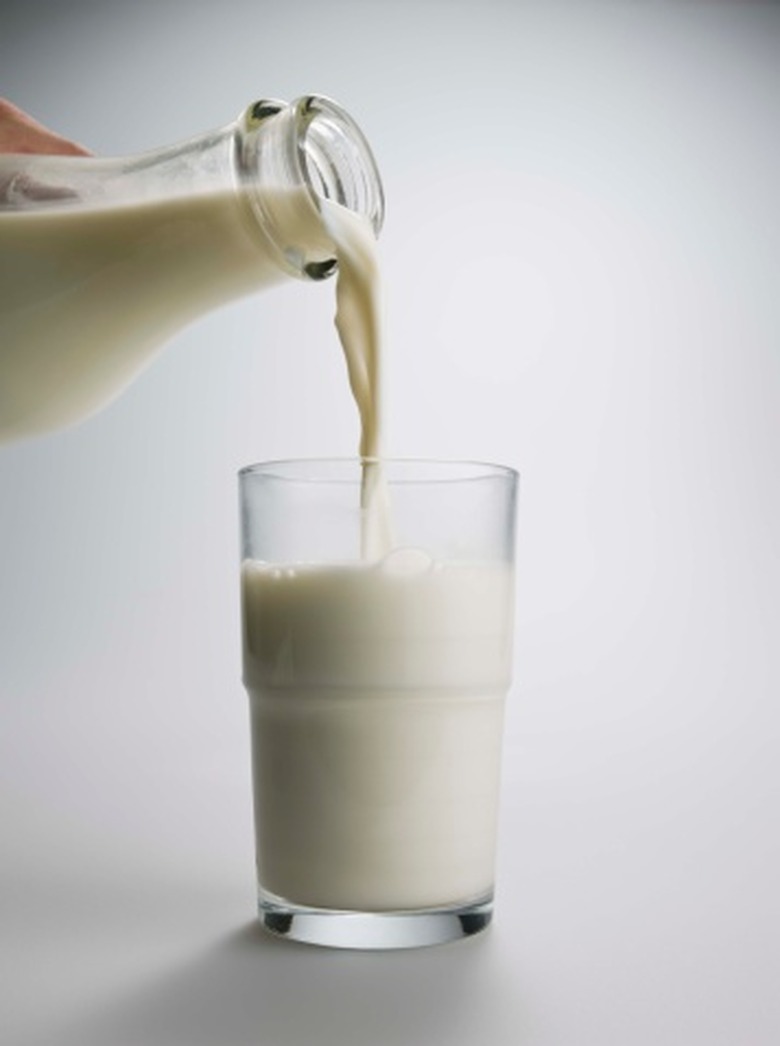How To Make Homemade Glue Out Of Milk For A Science Project
Milk contains casein, a protein that is used in the production of glues, paints and plastics, as well as some food products. If you heat up milk and add an acid, such as vinegar, you will cause a chemical reaction whereby the casein separates from the liquid component of milk. When you add a base, such as baking soda, to the casein extracted from milk, the acid is neutralized and the result is a smooth adhesive that can be used for wood and paper.
Step 1
Pour the milk into a saucepan and gently heat it. Add the vinegar and stir the mixture. You should see solids beginning to form. If necessary, add a small amount more of the vinegar, while continuing to stir the mixture. The solids should continue forming and start to settle on the bottom of the pot.
Step 2
Remove the pot from the source of heat and let the mixture cool. Continue stirring as it is cooling, until the solids stop forming. Drape the cheesecloth over the top of the glass tumbler and push it down into the glass to form a rounded depression that is several inches deep. Slowly strain the contents of the pot through the cheesecloth and into the glass. The liquids, or whey, will pass through the cloth, while the solids, or curds, remain.
Step 3
Press down on the curds with a paper towel to remove any extra moisture. Place them in the bowl and add several tablespoons of water. Stir the mixture until the lumps in the curds begin to dissolve and blend with the water. Add two teaspoons of baking soda and continue stirring until you have a glue that is smooth and free of lumps.
Things Needed
- One cup non-fat milk
- Baking soda
- Measuring spoons
- Saucepan
- Spatula or paint stirrer
- 1/3 cup of white vinegar
- Glass tumbler
- Bowl
- Cheesecloth
- Paper towels
TL;DR (Too Long; Didn't Read)
Try making glue with low-fat and full-fat varieties of milk as well. Show the difference in strength and consistency of these glues compared with the non-fat version. Set up demonstrations to show the strength of this glue, such as gluing wooden toy blocks together and seeing how many can be added before the adhesion in the top block fails. Compare the strength of the milk glue with some commercial glues.
Warning
Do not let the milk and vinegar mixture boil as it will affect the production of curds. Wear protective glasses whenever you perform chemistry experiments, and never leave the stove unattended while you are heating chemical compounds.
Cite This Article
MLA
Nomi, Jacob. "How To Make Homemade Glue Out Of Milk For A Science Project" sciencing.com, https://www.sciencing.com/make-homemade-glue-out-milk-science-project-12106393/. 24 April 2017.
APA
Nomi, Jacob. (2017, April 24). How To Make Homemade Glue Out Of Milk For A Science Project. sciencing.com. Retrieved from https://www.sciencing.com/make-homemade-glue-out-milk-science-project-12106393/
Chicago
Nomi, Jacob. How To Make Homemade Glue Out Of Milk For A Science Project last modified August 30, 2022. https://www.sciencing.com/make-homemade-glue-out-milk-science-project-12106393/
